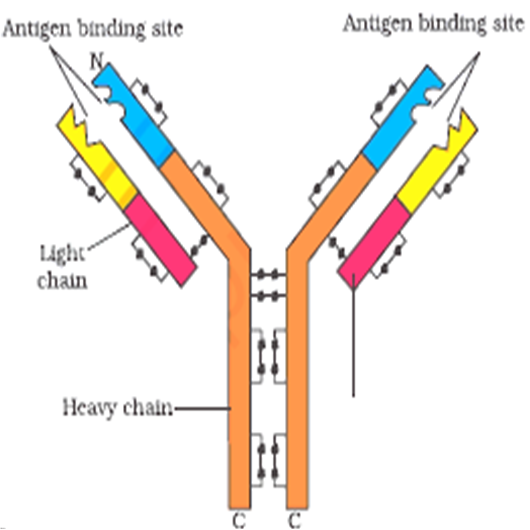 Multiple Choice Questions
Multiple Choice QuestionsWhich phase comes in between the G1 and G2 phases of cell cycle?
M - phase
G0 - phase
S - phase
Interphase
Cell division cannot be stopped in which phase of the cell cycle?
G1- phase
G2- phase
S- phase
Prophase
The difference between systolic and diastolic pressure in human is
120 mm Hg
80 mm Hg
40 mm Hg
200 mm Hg
Which one of the following viruses contains is a DNA and RNA?
Cyanophage
Herpes virus
Leuko virus
Polio virus
How many variable segments are present in the basic structure of antibody molecule?
One
Two
Three
Four
D.
Four
An antibody is a Y-shaped protein molecule that is made by a B-lymphocyte in response to a particular antigen. It consists of four polypeptide chains, two long or heavy chains and two short or light chains. Each molecule has two identical antigen binding sites which are formed by both light and heavy chains. Much of the molecule is constant but the tips of the 'Y' are variable and match precisely part of a particular antigen molecule.

In the above figure, Blue and yellow colour represents variable region on both heavy and light chain respectively.
